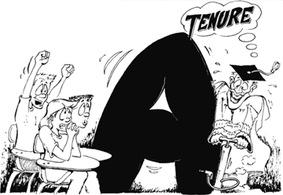I often hear two reasons offered for the increase. During the 1960s, Professors were eager to help students stay in the school, so as to avoid the draft and the Vietnam war. (The lax standards were extended to female students for verisimilitude.)

Both accounts propose that grade inflation is solely due to changes in professors' grading policies, and that students have not changed. A recent paper challenges that assumption, and offers some persuasive data.
Rey Hernández-Julián and Adam Looney brought economic models of inflation to bear on the question. As they point out, higher prices don't always signal inflation. For example, price may increase as quality increases.
They examined 20 years of transcript data from 90,000 students at Clemson University over the years 1982-2001. During that time grades increased from 2.67 to 2.99, comparable to the increase observed elsewhere. They also had data on the characteristics of these students.
The researchers observed shifts in student characteristics and course-taking behavior that accounted for a little more than half of the increase in grades.
First, the students coming to Clemson were better prepared, as measured by the SAT. Math scores increased by 29 points over the period, and Verbal scores by 15 points.
Second, student enrollment drifted towards departments that tend to assign higher grades. More students took courses in Speech and Communication, Spanish, Graphic Communications, and yes, Education; all these department assign average grades above the means of other departments. Tough-grading departments--Math, Accounting, Physics, Mechanical Engineering--saw drops in enrollment.
Third, the percentage of women at Clemson increased, and women earn higher grades than men do. This increase was modest (4% points) and accounts for little of the grade increase, but the authors point out that the increase in women enrollment is high nationwide (from 41% to 56% between 1970 and 2000) and so may account for more of the grade increase at other institutions.
The upshot is that a little less than half of the increase in grades is attributable to grade inflation. The authors identify possible contributors to grade increase, and whatever they cannot account for is labeled "inflation." They point out that the actual value of grade inflation could be lower.
I would add that the actual value could, in theory, also be higher. Unobserved variables like course difficulty and student effort could be decreasing. Obviously measuring such variables at broad scale is difficult if not impossible.
 RSS Feed
RSS Feed